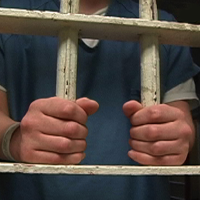U.S. Supreme Court Rejects State Plea to Delay Inmate Release

A prison hunger strike, court-ordered inmate transfers to avoid a deadly fungus and a series of adverse court decisions over wretched conditions and prison overcrowding is bringing to a head, or simply further ratcheting up, a desperate situation in California’s penal system.
On Friday, the U.S. Supreme Court rejected the state’s appeal for a stay while it appeals a lower-court edict—to the justices—that it shed another 9,600 inmates from its dangerously overcrowded prison system by the end of the year. The 6-3 vote was the second time the high court has ruled against the state and, although the ruling was more emphatic than the first, the Brown administration is not done.
The justices first refused to release the state from lower-court rulings in a 5-4 decision two years ago, agreeing with them that time spent in the California prison system was “cruel and inhuman punishment.” But it showed a willingness to hear arguments that sufficient progress was being made toward reaching prison population goals of overcrowding that doesn’t exceed 137.5% of designed capacity, and did not rule out in the second go-round last week hearing that appeal.
Justices Antonin Scalia, Clarence Thomas and Samuel Alito agreed with the Brown administration on Friday. Thomas joined Scalia’s dissent (pdf) that not only would have granted the stay, it would have dissolved the injunction and freed the state from court control. Scalia scolded the majority for ignoring the state’s incremental progress and called their reasoning and vote a “ceremonial washing of the hands” after already having decided to smack California down.
And now the state will reap just what it sows. “California must now release upon the public nearly 10,000 inmates convicted of serious crimes—about 1,000 for every city larger than Santa Ana,” Scalia wrote.
Well, not exactly. California still has a few options to make the cut without just putting a horde of dangerous criminals back on the streets. For instance, the state could suck up the expense and ship prisoners to other states. Or it could release inmates with serious illnesses and others near the end of their terms.
The Brown administration has pursued a realignment policy for more than a year that has reduced the prison population by 25,000 while directing low-level felons and parole violators to county jails.
One option isn’t letting a bunch of inmates starve themselves to death. A statewide hunger strike to protest indefinite solitary confinement, which initially involved 30,000 inmates, is down to less than 500 but still drawing international scrutiny of California prisons.
Another non-starter is leaving around 3,200 inmates known to be susceptible to deadly Valley Fever in two Central California prisons. A judge, in June, ordered them moved within 90 days.
–Ken Broder
To Learn More:
California Prison Early Release Plan Won't be Delayed, Supreme Court Rules (by Paul Elias, Associated Press)
California Prisons: U.S. Supreme Court Rejects State Bid to Avoid Release of More Inmates (by Howard Mintz, San Jose Mercury News)
Supreme Court: California Must Continue Prisoner Release (by Richard Wolf, USA Today)
Ruling Puts Release of Inmates in California a Step Closer (by Evan Halper and Paige St. John, Los Angeles Times)
Justice Antonin Scalia Dissent (Brown et al v. Marciano Plata and Ralph Coleman) (pdf)
Governor Brown Tells Court His Last-Minute Prison Plan Is “Ugly” but Will Have to Do (by Ken Broder, AllGov California)
- Top Stories
- Controversies
- Where is the Money Going?
- California and the Nation
- Appointments and Resignations
- Unusual News
- Latest News
- California Forbids U.S. Immigration Agents from Pretending to be Police
- California Lawmakers Urged to Strip “Self-Dealing” Tax Board of Its Duties
- Big Oil’s Grip on California
- Santa Cruz Police See Homeland Security Betrayal in Use of Gang Roundup as Cover for Immigration Raid
- Oil Companies Face Deadline to Stop Polluting California Groundwater





